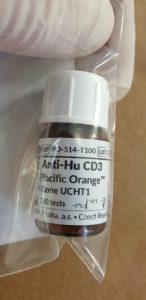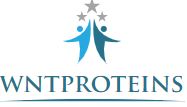Nucleolar and spindle-associated protein 1 (NUSAP1) is a pivotal tumor-related protein that has been implicated in the development of broad spectrum of tumors. However, no detailed research of the function of NUSAP1 in nasopharyngeal carcinoma (NPC) has been reported. The intention of this work is to reinforce our understanding of NUSAP1 in the development of NPC. By analyzing knowledge out there inside the Oncomine database, we discovered that NUSAP1 expression was elevated in NPC relative to regular tissues. Further, we confirmed that NUSAP1 expression in scientific specimens of NPC and a number of NPC cell strains was elevated. Down-regulation of NUSAP1 by gene silencing markedly depleted the capability of NPC cells to proliferate and invade.
Contrastingly, overexpression of NUSAP1 potentiated the proliferative and invasive talents of NPC cells. Further mechanistic analysis revealed that NUSAP1 knockdown decreased ranges of Wnt/β-catenin signaling in NPC cells via a mechanism related to downregulation of glycogen synthase kinase-3β (GSK-3β) phosphorylation. However, suppression of GSK-3β markedly abolished the inhibitory impact of NUSAP1 knockdown on Wnt/β-catenin signaling. Further, inhibition of Wnt/β-catenin signaling partially reversed NUSAP1-mediated tumor progress in NPC cells. In addition, NUSAP1 knockdown restrained tumorigenesis of NPC in vivo, and was related to down-regulation of Wnt/β-catenin signaling. In conclusion, these findings reveal that NUSAP1 is succesful of accelerating proliferation and invasion in NPC cells by potentiating Wnt/β-catenin signaling. Our research unveils a possible function of NUSAP1 in selling NPC tumors and means that the protein is a sexy antitumor goal for NPC therapy.
DNA replication and sister chromatid cohesion 1 promotes breast carcinoma development by modulating the Wnt/β-catenin signaling and p53 protein
The goal of this research is to evaluate the prognostic and useful function of DSCC1 in breast carcinoma, in addition to the potential mechanism. Based upon the TCGA knowledge, the expression sample and prognostic worth of DSCC1 in breast carcinoma was evaluated. The mRNA and protein ranges of molecules have been decided utilizing qRT-PCR and Western blot. In vitro useful function of DSCC1 in tumor cells was decided utilizing cell counting equipment 8, clone formation, and Transwell assays. Gene set enrichment evaluation (GSEA) was carried out to find out DSCC1 associated gene units, that are additional confirmed by Western blot. The outcomes confirmed that DSCC1 is overexpressed in breast carcinoma tissues and its excessive expression was linked to shorter general survival.
Overexpression of DSCC1 facilitated the proliferation, invasion and migration of breast carcinoma cells, whereas knockdown of DSCC1 confirmed reverse outcomes. GSEA confirmed that prime DSCC1 expression had a constructive correlation with p53, and Wnt signaling-related molecules. Western blot confirmed that silencing DSCC1 elevated the degrees of p53 and p-β-catenin, whereas decreased p-GSK-3β and cyclin D1 expression. These observations illustrate that DSCC1 emerges a properly worth on the prognosis and prognosis of breast carcinoma, and facilitates the development of breast carcinoma partly by activating Wnt/b-catenin signaling and inhibiting p53. The outcomes confirmed that DSCC1 is overexpressed in breast carcinoma tissues and its excessive expression was linked to shorter general survival.
Overexpression of DSCC1 facilitated the proliferation, invasion and migration of breast carcinoma cells, whereas knockdown of DSCC1 confirmed reverse outcomes. GSEA confirmed that prime DSCC1 expression had a constructive correlation with p53, and Wnt signaling-related molecules. Western blot confirmed that silencing DSCC1 elevated the degrees of p53 and p-β-catenin, whereas decreased p-GSK-3β and cyclin D1 expression. These observations illustrate that DSCC1 emerges a properly worth on the prognosis and prognosis of breast carcinoma, and facilitates the development of breast carcinoma partly by activating Wnt/b-catenin signaling and inhibiting p53.

Nucleolar and spindle-associated protein 1 accelerates cellular proliferation and invasion in nasopharyngeal carcinoma by potentiating Wnt/β-catenin signaling via modulation of GSK-3β
Effect of Klotho protein throughout porcine oocyte maturation via Wnt signaling
Klotho protein is well-known as an anti-aging agent, nonetheless, a number of research have urged that Klotho protein additionally will increase antioxidant exercise and the reproductive system, as Klotho protein is intently related to Wnt signaling. The goal of our research was to research the enhancement of porcine oocyte in vitro maturation via the Klotho protein-Wnt signaling pathway. Following immunohistochemistry and ELISA, we handled cells with Klotho protein throughout in vitro maturation. Lithium Chloride, a selected activator of Wnt signaling, was subsequently co-administered with Klotho protein. Mature oocytes subjected to therapies have been used for the evaluation of embryonic improvement, qRT-PCR, and immunocytochemistry.
[Linking template=”default” type=”products” search=”Anti- Serum Proteins without Immunoglobulins Antibody” header=”1″ limit=”139″ start=”2″ showCatalogNumber=”true” showSize=”true” showSupplier=”true” showPrice=”true” showDescription=”true” showAdditionalInformation=”true” showImage=”true” showSchemaMarkup=”true” imageWidth=”” imageHeight=””]
Treatment with 5pg/ml Klotho protein considerably elevated cumulus cell growth, blastocyst formation charges, and the overall cell quantity of blastocysts. During cotreatment with 5mM Lithium Chloride and 5pg/ml Klotho protein, blastocyst formation charges have been the best in Klotho protein-treated oocytes and the bottom in Lithium Chloride-treated oocytes. Expression ranges of Wnt signaling-related transcripts and proteins have been considerably impacted by Klotho protein and Lithium Chloride. Moreover, cellular ATP ranges and antioxidant actions have been enhanced by Klotho protein therapy. These findings counsel a major involvement of the Klotho protein-Wnt signaling mechanism in porcine oocyte maturation.


